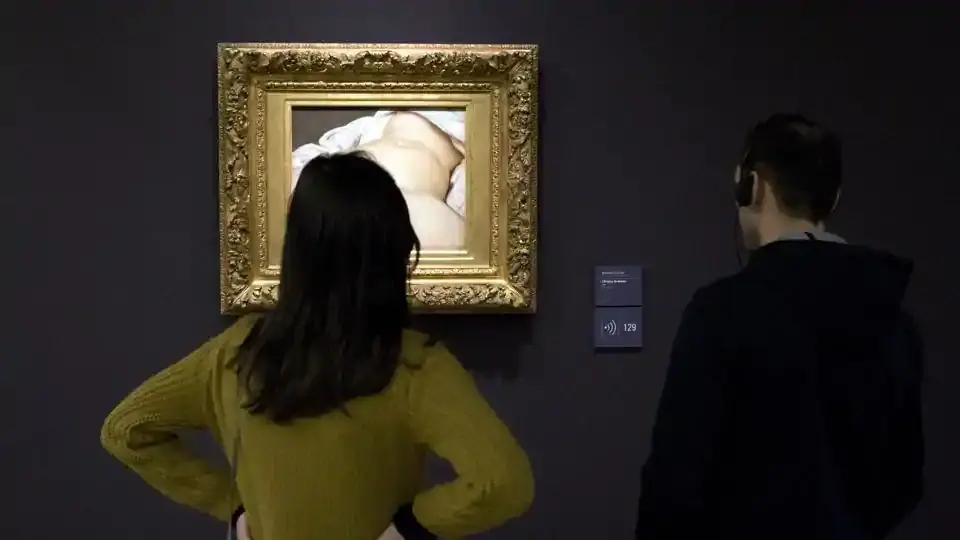
One of the greatest mysteries in art history appears to have been solved.
The identity of the model who posed for the most scandalous painting of the 19th century, Gustave Courbet’s "L’Origine du monde" (The Origin of the world), has finally been revealed.
Experts say they are "99 percent sure" the painting’s notoriously naked nether regions belong to the Parisian ballet dancer Constance Queniaux.
The canvas has never lost its power to shock -- bringing out the prude in Facebook, which censored profiles using it as late as 2011.
For decades art historians have been convinced that the naked torso and genitalia it depicts belonged to Courbet’s lover, the Irish model Joanna Hiffernan.
In a typically Parisian love triangle, she was also romantically linked with his friend, the American artist James Whistler.
But doubts persisted -- mainly because the dark pubic hair in the painting did not correspond with Hiffernan’s mane of flaming red curls.
Now documentary evidence found in the correspondence between the French writers Alexandre Dumas fils -- the son of "The Three Musketeers" author -- and George Sand points directly to a former dancer at the Paris Opera.
Queniaux was a mistress of the Ottoman diplomat Halil Sherif Pasha -- aka Khalil Bey -- when the picture was painted in the summer of 1866.
And it was he who commissioned the painting from Courbet for his personal collection of erotica.
French historian Claude Schopp discovered the Queniaux connection when he was going through copies of Dumas’ letters for a book.
One particular passage perplexed him: "One does not paint the most delicate and the most sonorous interview of Miss Queniault (sic) of the Opera."
It was only when he consulted the handwritten original that he realised there had been a mistake in its transcription. "Interview" was in fact "interior".
"Usually I make discoveries after working away for ages," said the writer, whose new book on the find will be published this week.
"Here I made it straight away. It almost feels unjust," Schopp joked.
Schopp shared his discovery with the head of the French National Library’s prints department, Sylvie Aubenas, who is also convinced that Queniaux was the model.
"This testimony from the time leads me to believe with 99 percent certainty that Courbet’s model was Constance Queniaux," she confirmed to AFP.
Queniaux was 34 at the time, and having retired from the Opera, was competing with the famed courtesan Marie-Anne Detourbay for Halil Sherif Pasha’s affections.
Detourbay, sometimes known as Jeanne de Tourbey, held a famous salon and would later become the comtesse de Loynes. She was also thought by some to be the model for "L’Origine du monde".
But Aubenas said contemporary descriptions of Queniaux’s "beautiful black eyebrows" corresponded better with the model’s luxuriantly bushy maidenhair.
The library has several photographs of her including one by the famed photographic pioneer, Nadar.
Aubenas believes the secret of the model’s identity was known by the cognoscenti but was lost over time as Queniaux became a highly respectable lady of leisure known for her philanthropy.
Another discovery by Schopp helped to clinch the argument, she said.
When she died in 1908, Queniaux left a Courbet painting of camellias in her will at whose centre is a lusciously open red blossom.
Camellias were strongly associated with courtesans at the time thanks to Dumas’ novel "The Lady of the Camellias", which was adapted into Verdi’s opera "La Traviata".
"What better tribute from the artist and his patron to Constance?" Aubenas said, who believes it may have been a gift from Halil Sherif Pasha.
Born in Cairo, the pasha was a renowned art collector and gambler who came from a Turkish-Albanian family from what is now northern Greece.
He commissioned a series of major works from Delacroix including "The Women of Algiers" and Ingres’ equally iconic and extravagantly fleshly depiction of a harem, "The Turkish Bath".